Conference calls are a staple for any team, more so for remote workforces. Not only is it a quick and convenient communication method for everyone involved, but it’s also less time-consuming than setting up an elaborate video meeting.
You can use the Android device itself to form conference calls, or you can download a reliable conference call service. Either way, you’re assured of getting a group of people together to discuss important (and unimportant!) things effectively and simply.
What is Conference Calling on Android?
Do you know anyone who doesn’t have a mobile phone in their hands?
Our mobile phones have become an integral part of our modern, everyday life. Whether it’s for personal reasons or business, you need them to stay in touch with people around the globe, among other things.
It doesn’t matter whether you’re an Android user or an Apple loyalist; everybody needs a mobile phone for their business, social life, and leisure. And while all the extras are great, let’s also not take the focus away from the core functionality of a cell phone: Make voice communication easy.
Conference calling allows people to create a channel of communication between multiple people at once. The Android operating system, in particular, holds the largest market share of smartphones, so it’s no surprise that users are looking for a reliable solution to perform conference calls on Android.
Read on as I discuss how you can carry out conference calling on Android without any hassle.
5 Tools to Improve Conference Calling on Android
We’re lucky that meetings today are a lot easier than they used to be. And while there are tons of video calling apps, you’ll also find specific audio and video conferencing apps for Android phones.
RingCentral
RingCentral is hands down one of the best conference calling tools for the modern office. You get more than conference calling abilities with this platform since it’s also a VoIP phone service, which allows you to make phone calls with just an internet connection.
Besides, the whole solution is housed in the cloud, so you don’t have to install any equipment, with the company taking care of all the maintenance and upgrades.
Its free plan lets you add up to hundred participants, with the meeting duration capped at 40 minutes. If you want to add on larger meeting options, you’ll have to upgrade to their premium plans, and considering they start at just $19.99 per month, you won’t be breaking the bank anytime soon.
GoToMeeting
Developed by LogMeIn, GoToMeeting is both a reliable and accessible solution to conference calling on Android.
Whether you want to interview candidates online or need a casual space for holding group discussions, the GoToMeeting app makes it relatively easy to host a session. The ‘Commuter’ mode is a data-saving mode that delivers high-quality VoIP audio and video calls that helps save up to 90% of mobile data on the go.
Additionally, you can share device screens and files, control presentations, schedule meetings, and chat with attendees.
Zoom

Zoom has gained popularity like no other conference calls service amidst the pandemic, and it’s easy to see why. You can use this service to make work-related as well as personal conference calls.
With the launch of the Zoom Cloud Meetings app, the power of unified communications is now available on Android mobile phones. The app offers several premium features like high-definition conference calling, screen sharing facility, and direct file sharing right from the Android device.
You can add participants to a meeting or choose to set invited users for view-only webinar attendance—the choice is yours. Cross-platform support, status settings availability, and multi-network support are other advantages.
Skype

After acquiring their competitor Skype, Microsoft modified the platform into an all-in-one business communication app.
They divided Skype into two different channels: one for personal use and the other for business. Users can send text messages for free, share media files, and, of course, hold three-way calls on devices like Android. Every conference call has a maximum capacity of 25 people, with a fair usage policy that allows calls to last up to four hours at a stretch.
You can make free voice calls as well as video calls to your fellow Skype users, along with regular calls to mobile phones and landlines across the world—provided you purchase free credits that let you conference call with VoIP all across the board.
Google Hangouts

Anyone with a Gmail account can hold conference calls on Google Hangouts at no additional charge.
Setting up a conference call hardly takes 10 seconds. Once that’s done, you can simply forward the Google hangout link to anyone who you want on the call.
Google Hangouts is generally better suited for one-on-one meetings, but it also works for hosting smaller conference calls of up to 25 people. You can share your screen and make video conference calls as well.
While this conferencing tool is simple, straightforward, and user-friendly, there are a few drawbacks to keep in mind. For instance, there’s no customer support if you use the free version. A call recording feature isn’t available either.
The Basics of Conference Calling on Android
Here, we’ll cover the basics of making conference calls on Android devices. Let’s take a quick look.
Making Conference Calls on Default Phone Application
You can launch Android’s dedicated phone application directly from your phone to start a phone call. You have two options: Either enter your friend’s number in the number field directly or search for them in the contact lists.
On an Android device, click on Contacts in the phone app and then type in your friend’s name in the search field. Once you see the name, tap on it and make the call.
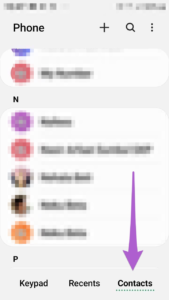
Next, wait for them to pick up the phone.
Once your friend picks up the phone, you can tell them to wait for a couple of seconds while you call another friend to join the conference call.
Tap on the Add call icon on your screen. Again, you can either enter your friend’s phone number on the number field or the contact name from your contact list as done previously.
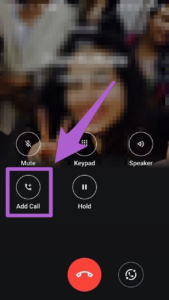
As your two friends are on hold, your next step would merge the calls. Tap on the Merge icon. This will immediately connect your two phone calls, and the three of you can immediately start chatting.
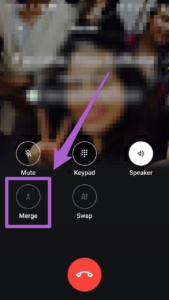
If you want to add more friends to the conference call, you’ll have to merge the first two calls before adding a third friend. You can continue this until you add a sixth person to the call.
Making Conference Calls Through an App
Many people prefer making conference calls through services and applications instead of their phones. While some have a 10-user cap, others allow you to connect up to a hundred people simultaneously, depending on the plan you subscribe to.
While the steps will differ depending on service or application use, I’ll discuss how you can hold a conference call on Android on two of the most popular services: RingCentral and Zoom.
RingCentral
The RingCentral app is one of the most reliable conference calling tools you can get your hands on. It has several collaboration features designed to make phone calls and conference calls more productive.
Once you subscribe to the RingCentral Office plan, you’ll be able to make free conference calls for international and international numbers in real-time directly from the app.
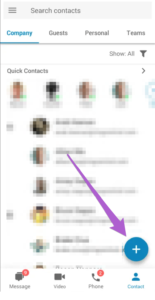
Select the contacts you want to start a conference call with from the directory, then tap on the + icon. Click on the New Conference option, and that’s it!
Zoom
After downloading the Zoom app from the Google Play Store, sign up for an account. Once that’s done, click on New Meeting. You can protect a meeting with a password and turn your audio call into a video call if you choose to share video.
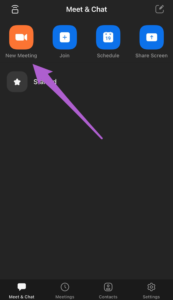
To hold a conference, you select Participants and click on Invite. You can then share the conference link via SMS or instant messaging apps like Facebook messenger, WhatsApp, and so on.
The recipient can then join the chat by simply clicking on the link.
The Maximum Limit Differs Depending on the Service You Use
If you decide to use your Android device’s dial pad, a total of six people can be on a conference call, including you. Luckily, several other apps and services are available on the Google Play Store that let you merge more than six numbers at once.
Unlike Apple‘s FaceTime, Android smartphones and tablets don’t have built-in video calling features or applications. Precisely why you need third-party applications and services if you decide to video call in a conference.
5 Tricks for Conference Calling on Android
Here are a few Android phone conference call tricks you can use to make the process smoother for you.
Ask Everyone to Mute Themselves When Not Speaking
You can mute yourself during a conference call by tapping on the Mute button. While you’ll be able to hear other people talking, they won’t be able to hear you unless you tap the mute button again to unmute yourself.
This is something that comes in handy when holding large conference calls.
Eliminate Echos
If you find a participant hears their voice back immediately after speaking or participants hear the echo of the speaker’s voice, you have an echo problem in your hand.
Ask the participants whether they are using a cell phone, and if anybody is, ask them to mute their line. You can also mute all the participants on the conference call and then have every participant unmute their line one by one to identify the source of the echo.
The other option is to ensure everyone removes any other speakerphones or at least mutes them.
Select a Quiet Background
Try to choose a location that doesn’t have a lot of background noise before making a conference call. Remember, while you may be accustomed to your background, others won’t. Therefore, they may get distracted during the phone call hearing the loud traffic outside your window.
Although convenient, you should avoid holding a conference call from your phone. If you get stuck somewhere that’s noisy, the conference call won’t be a success unless you use the mute button.
Avoid and Discourage Open-Ended Discussions
It may be tempting to ask for other people‘s comments after making your point, but it’s best to avoid them when on a conference call. For instance, saying something like “Any comments?” or “What do you think about my idea?” can create a lot of chaos. It’s bound for someone to either get talked over or cut off, resulting in a mess.
If you do want feedback, you can list the participants in a sequence. For example, you can use statements like: “Let’s hear Zeke’s opinion first, followed by Jack, and then Zoe.”
This way, everyone will get a chance to voice their opinions peacefully and effectively without interrupting each other.
Do Your Best to Create Engagement
Listeners tend to zone now when conference calls become a one-way street. You have to make a point to keep their minds focused through average participation by constantly asking questions that encourage responses.
In case your participants are phone shy, you should try incorporating their involvement into your agenda. You can give your reasons to participate by assigning them roles within the call. This will encourage participation and give them an ample amount of time to do homework to discuss a topic expertly.
You can also create engagement in other ways, like using survey tools or polls in your conference calls.
from Quick Sprout https://ift.tt/32NjFKt
via IFTTT


